Antonio Alex-Amor
Joint Ultra-wideband Characterization of Azimuth, Elevation and Time of Arrival with Toric Arrays
Jul 24, 2023



Abstract:In this paper, we present an analytical framework for the joint characterization of the 3D direction of arrival (DoA), i.e., azimuth and elevation components, and time of arrival (ToA) in multipath environments. The analytical framework is based on the use of nearly frequency-invariant beamformers (FIB) formed by toric arrays. The frequency response of the toric array is expanded as a series of phase modes, which leads to azimuth-time and elevation-time diagrams from which the 3D DoA and the ToA of the incoming waves can be extracted over a wide bandwidth. Firstly, we discuss some practical considerations, advantages and limitations of using the analytical method. Subsequently, we perform a parametric study to analyze the influence of the method parameters on the quality of the estimation. The method is tested in single-path and multipath mm-wave environments over a large bandwidth. The results show that the proposed method improves the quality of the estimation, i.e., decreases the level of the artifacts, compared to other state-of-art FIB approaches based on the use of single/concentric circular and elliptical arrays.
Joint Direction-of-Arrival and Time-of-Arrival Estimation with Ultra-wideband Elliptical Arrays
Jul 26, 2022



Abstract:This paper presents a general technique for the joint Direction-of-Arrival (DoA) and Time-of-Arrival (ToA) estimation in multipath environments. The proposed ultra-wideband technique is based on phase-mode expansions and the use of nearly frequency-invariant elliptical arrays. New possibilities open with the present approach, as not only elliptical, but also circular and linear arrays can be considered with the same implementation. Systematic selection/rejection of signals-of-interest/signals-not-of-interest in smart wireless environments is possible, unlike with previous approaches based on circular arrays. Concentric elliptical arrays of many sizes and eccentricities can be jointly considered, with the subsequent improvement that entails in DoA and ToA detection. This leads to the realization of pseudo-random array patterns; namely, quasi-arbitrary geometries created from the superposition of multiple elliptical arrays. Some simulation and experimental tests (measurements in an anechoic chamber) are carried out for several frequency bands to check the correct performance of the method. The method is proven to give accurate estimations in all tested scenarios, and to be robust against noise, channel nonidealities, position uncertainty in sensor placement and interferences.
Artificial Intelligence and Dimensionality Reduction: Tools for approaching future communications
Dec 20, 2021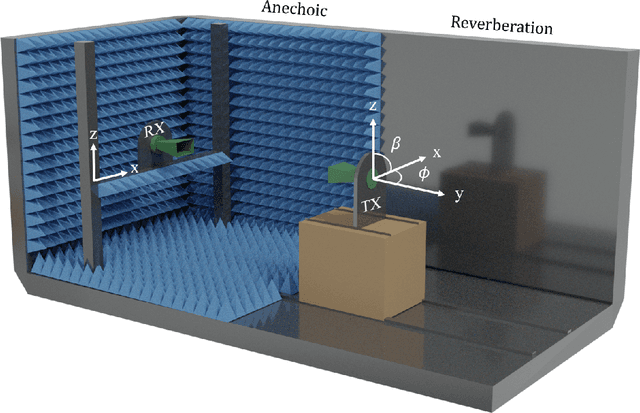
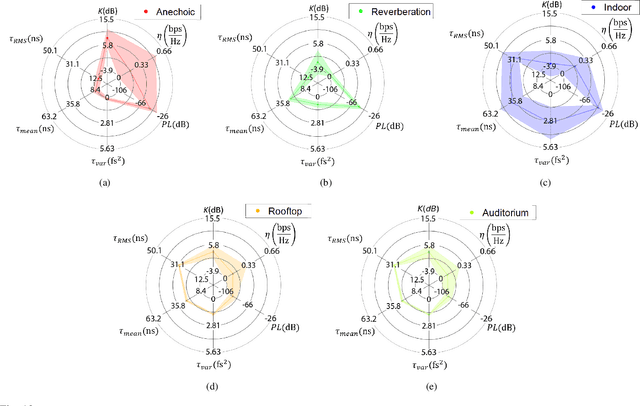
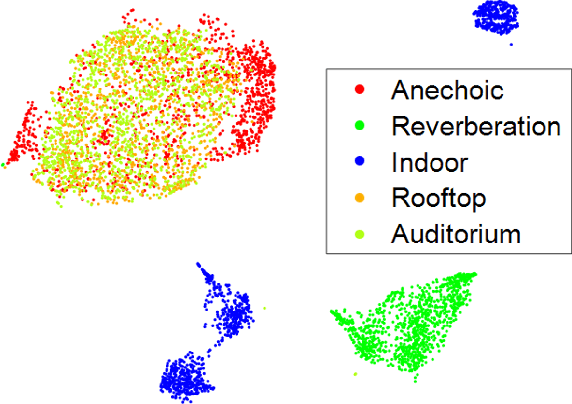
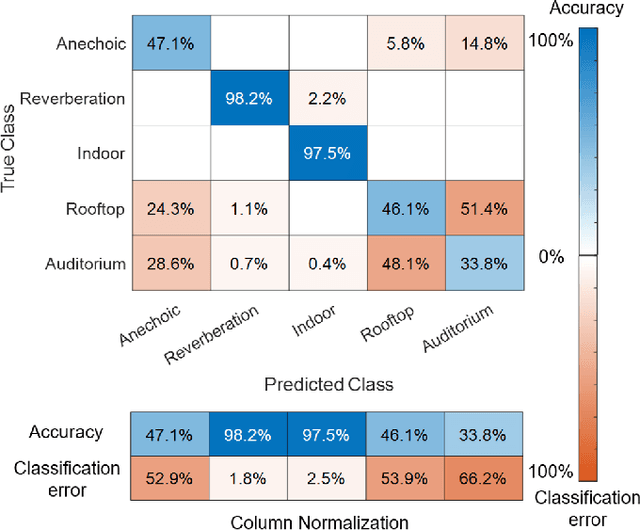
Abstract:This article presents a novel application of the t-distributed Stochastic Neighbor Embedding (t-SNE) clustering algorithm to the telecommunication field. t-SNE is a dimensionality reduction (DR) algorithm that allows the visualization of large dataset into a 2D plot. We present the applicability of this algorithm in a communication channel dataset formed by several scenarios (anechoic, reverberation, indoor and outdoor), and by using six channel features. Applying this artificial intelligence (AI) technique, we are able to separate different environments into several clusters allowing a clear visualization of the scenarios. Throughout the article, it is proved that t-SNE has the ability to cluster into several subclasses, obtaining internal classifications within the scenarios themselves. t-SNE comparison with different dimensionality reduction techniques (PCA, Isomap) is also provided throughout the paper. Furthermore, post-processing techniques are used to modify communication scenarios, recreating a real communication scenario from measurements acquired in an anechoic chamber. The dimensionality reduction and classification by using t-SNE and Variational AutoEncoders (VAE) show good performance distinguishing between the recreation and the real communication scenario. The combination of these two techniques opens up the possibility for new scenario recreations for future mobile communications. This work shows the potential of AI as a powerful tool for clustering, classification and generation of new 5G propagation scenarios.
Dispersion and Filtering Properties of Rectangular Waveguides Loaded With Holey Structures
Jan 02, 2021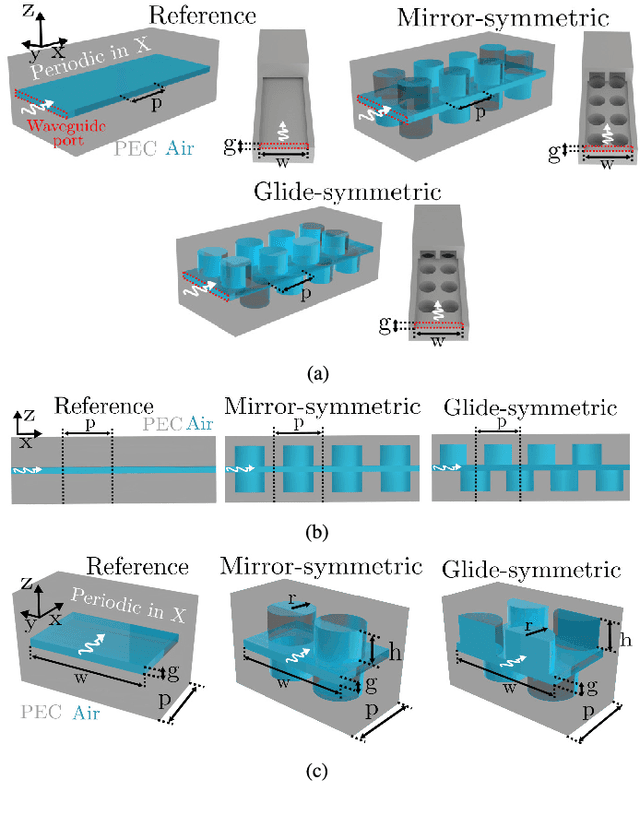

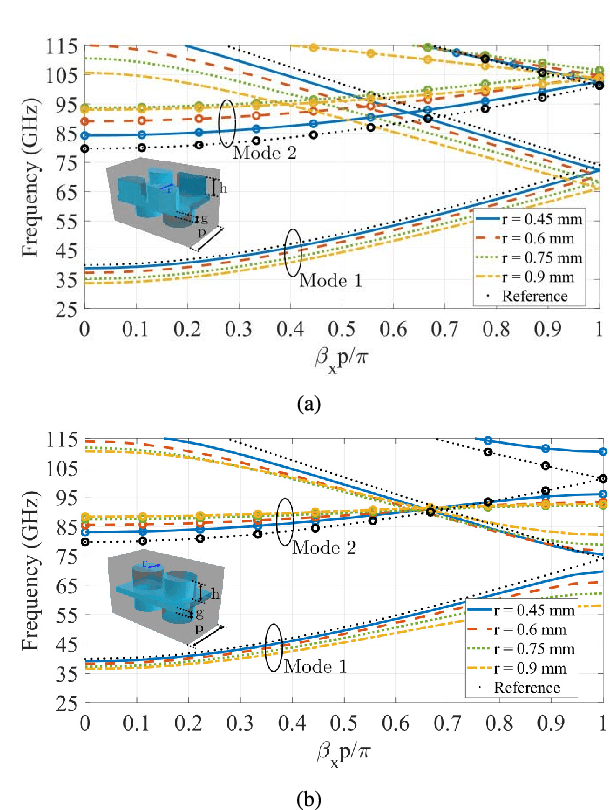
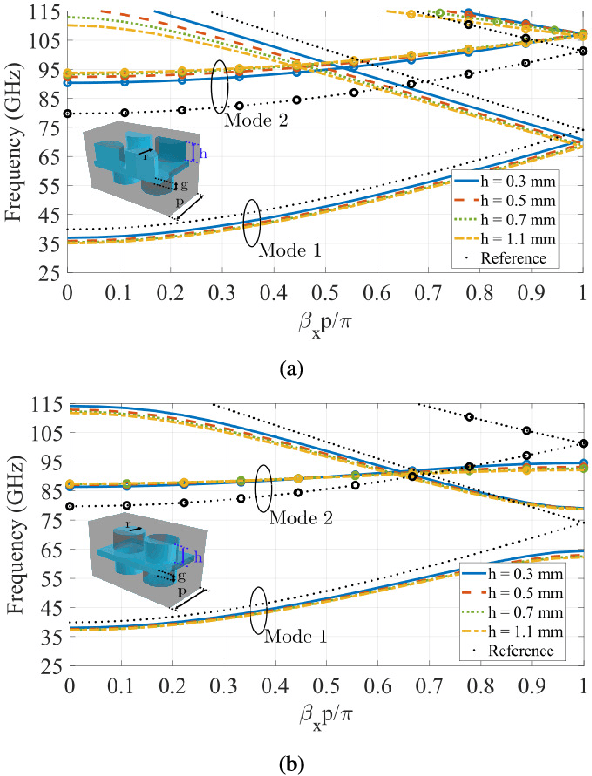
Abstract:This paper analyzes thoroughly the dispersion and filtering features of periodic holey waveguides in the millimeter-wave frequency range. Two structures are mainly studied depending on the glide and mirror symmetries of the holes. A parametric study of the dispersion characteristics of their unit cells is carried out. Glide-symmetric holey waveguides provide a higher propagation constant and a low dispersion over a wide frequency range regarding hollow waveguides. This property is particularly useful for the design of low-loss and low-dispersive phase shifters. We also demonstrate that glide-symmetric holey waveguides are less dispersive than waveguides loaded with glide-symmetric pins. Furthermore, we perform a Bloch analysis to compute the attenuation constants in holey waveguides with mirror and broken glide symmetries. Both configurations are demonstrated to be suitable for filter design. Finally, the simulation results are validated with two prototypes in gap-waveguide technology. The first one is a 180$^{o}$ phase shifter based on a glide-symmetric holey configuration that achieves a flat phase shift response over a wide frequency range (27.5\% frequency bandwidth). The second one is a filter based on a mirror-symmetric holey structure with 20-dB rejection from 63 GHz to 75 GHz.
 Add to Chrome
Add to Chrome Add to Firefox
Add to Firefox Add to Edge
Add to Edge